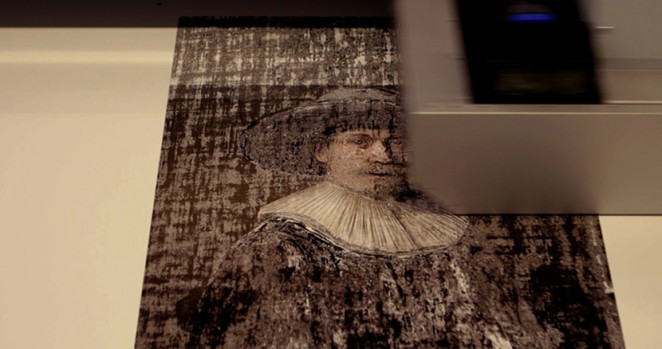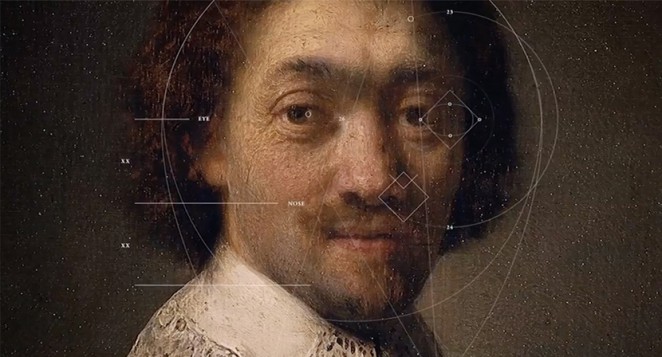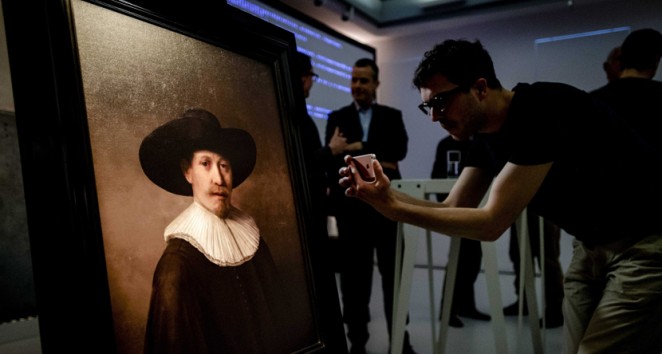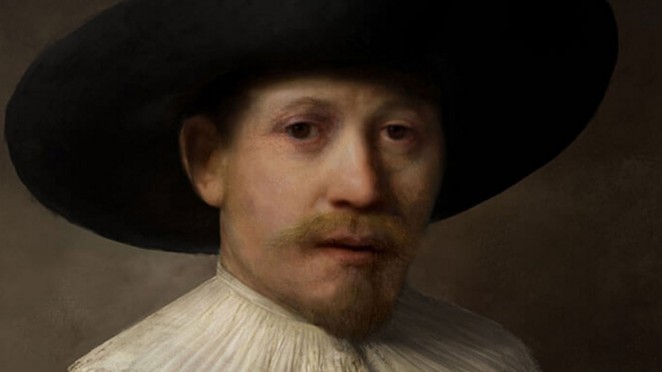Technology and data have come together to bring back to life one of the greatest painters of all time in “The Next Rembrandt,” a new 3D printed painting created solely from data of Rembrandt’s body of work.

The painting in question is a simple portrait of a man in black, 17th-century clothing with a white collar, and was created using data from Rembrandt’s work using deep learning algorithms and facial recognition techniques. The portrait consists of over 148 million pixels, based on 168,263 painting fragments from Rembrandt’s oeuvre, and to all but the most enthusiastic art scholars, should theoretically appear as a legitimate and convincing original Rembrandt piece. Considering the man himself, who represents for many the bastion of the Golden Age of painting in the Netherlands, died in 1669, that's something of an achievement!
“Can you teach a computer how to paint? ... For me it shows that the marriage between data and art is still in the honeymoon stage” Bas Korsten, ECD at JWT Amsterdam

The portrait was created through a highly detailed and complex process involving a team of data scientists, developers, engineers and Rembrandt experts, which took over 18 months and resulted in 150 gigabytes of digitally rendered graphics. The project is a cooperation between presenting partner ING Bank, J. Walter Thompson Amsterdam, supporting partner Microsoft and advisors from Delft University of Technology (TU Delft), The Mauritshuis and Museum Het Rembrandthuis. It all started with the data. The first step to making The Next Rembrandt, was analysing all 346 of Rembrandt’s paintings using high resolution 3D scans and digital files, which were upscaled by a deep learning algorithm. Microsoft contributed their cloud platform Azure to host and analyse this data, which formed the basis for The Next Rembrandt.
“This project is about bringing that innovative spirit to one of our main sponsorships, that of Dutch art and culture. We want to make technology relevant and learn more about one of the greatest Dutch painters of all time” Tjitske Benedictus, Head of Sponsoring at ING

Then came determining the subject. The majority of Rembrandt’s entire collection is made up of portraits, which is also the most consistent subject. Together with Rembrandt experts the demographic segmentation of the people in these portraits was defined. Ending up with the subject: a portrait of a Caucasian male between the age of thirty and forty, with facial hair, wearing black clothes with a white collar and a hat, facing to the right. After this, the subject’s features were generated in the style of Rembrandt. A software system was designed that could understand Rembrandt based on his use of geometry, composition, and painting materials. A facial recognition algorithm identified and classified the most typical geometric patterns used by Rembrandt to paint human features. It then used the learned principles to replicate the style and generate new facial features for the painting.
“You have this enormous amount of technical data from all these paintings from various collections, and can we actually create something out of it that looks like Rembrandt? That’s an appealing question” Professor Joris Dik, Technical University Delft

Next, these individual features were assembled into a fully formed face and bust according to Rembrandt’s use of proportions. When the 2D version of the painting was ready depth and texture were added. With the help of TU Delft, a height map was created to identify patterns on the surface of canvases. By transforming pixel data into height data, the computer could mimic the brushstrokes used by Rembrandt. Finally, to bring the painting to life, an advanced 3D printer that is specially designed to make high end reproductions of existing artwork was used. In the end, 13 layers of UV-ink were printed, one on top of the other, to create a realistic painting texture.
“This project shows a spark of the possibilities of intelligent data. Data is the new electricity, it has huge potential to help people and companies to achieve more” Ron Augustus, Director SMB Markets, Microsoft

All this has resulted in a work of art that portrays the power and the beauty of data and technology, and which blurs the boundaries between art and technology. The work is intended to fuel the conversation about the relationship between art and algorithms, between data and human design and between technology and emotion. The full story behind the unique painting is explained in full detail on the official Next Rembrandt website, and it will be on public display at a location to be disclosed at a later date. The work also begs a few questions; which artists will we see virtually exhumed next? Which would you guys want to see next? And perhaps most pertinently, is this the first dangerous, albeit tentative step towards technology replacing human beings as the great artists of the future?
The Next Rembrandt







